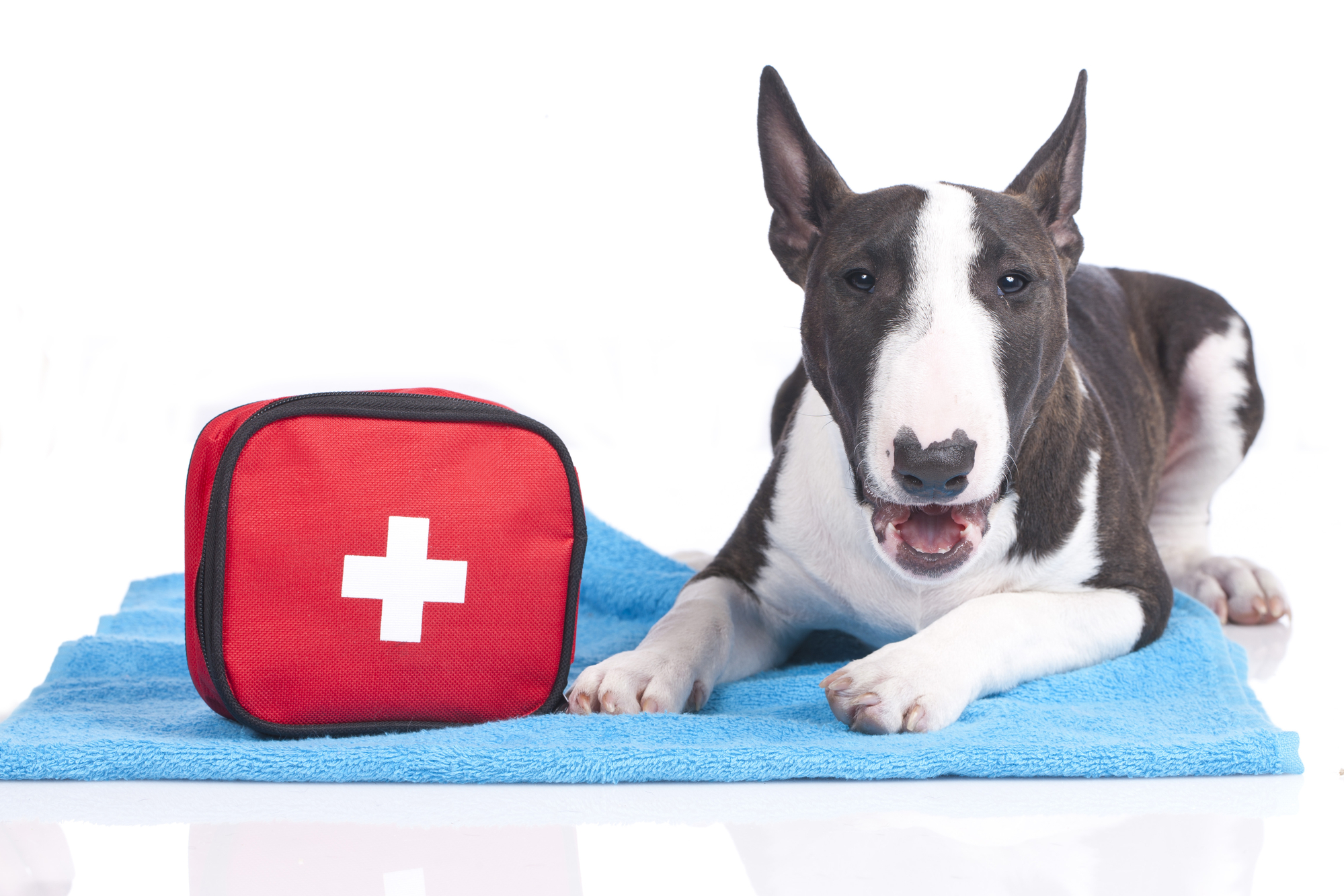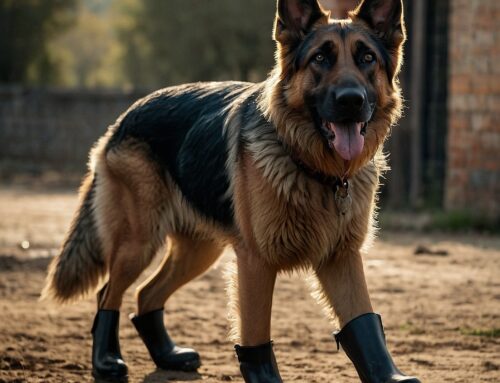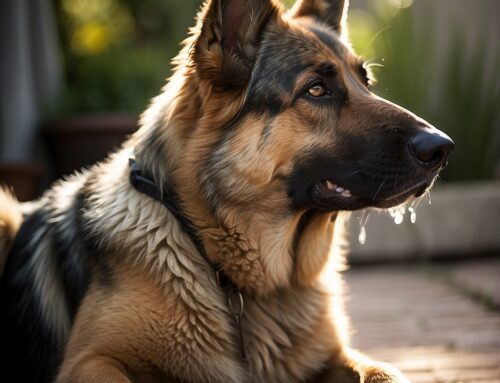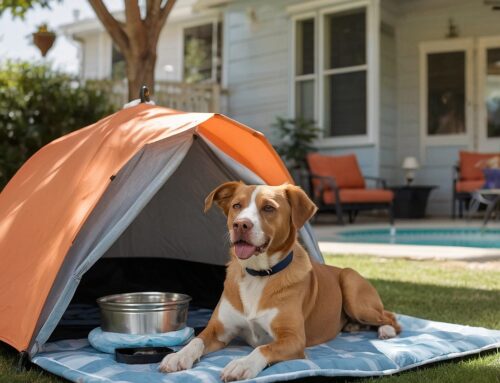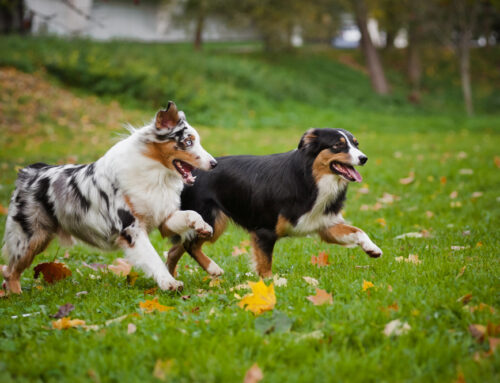An important question to ask, particularly as spring and summer are approaching, is: are you prepared for natural disasters? More specifically, even if you’ve thought about natural disasters (and perhaps taken action to prepare for them), do you have a plan in mind for your dog(s)?
Preparing for Natural Disasters
For instance, if you’re living in much of California, you’re probably aware that wildfires occur every year, and some years are, of course, worse than others. And of course, wildfires aren’t the only natural disaster that you should be prepared for; there are also earthquakes, floods, tornadoes and numerous other catastrophes that can occur.
It’s wise to designate a safe room in your home in case one of these events takes place; make sure this room will stay free of potential hazards, such as flying objects or broken windows. Basements, bathrooms and utility rooms can all be safe havens if they’re not already being used to store non-secured items. When choosing this room, make sure it has access to fresh water; if a loss of electricity might potentially occur, fill up sinks and bathtubs with potable water in advance.
Taking Care of Your Dog
In regions that are prone to flooding, find the highest location in your home — or use rooms that have accessible counters and/or high shelves that your dog can take shelter on. Keep emergency supplies (see below) on hand, and consider keeping your dog in a carrier when appropriate or if it becomes agitated.
At the first warning of a storm or other catastrophic event, bring your dog inside. If you’re advised by authorities to “shelter in place,” keep your dogs with you at all times (if they have to go outside to relieve themselves, make sure they’re on a leash while doing so).
Did you know that certain dogs may be able to sense an impending natural event even before you know about it? Some dogs may panic, wander off or hide. But in many cases, you may know where they’ve likely run to. Whether they’re indoors or outdoors, bring them into your safe zone to be with the rest of your family.
In case an evacuation is necessary, put your dog in a carrier if possible. Familiarize yourself with potential escape routes, and coordinate with relatives and friends ahead of time, so you know where you can go in case authorities order people to evacuate. Note that many state and local disaster shelters (including Red Cross shelters) may not accept pets other than service animals for people with disabilities, so take this into account when planning.
A Checklist for Dog Disaster Preparedness
Natural disasters aren’t just something you yourself should prepare for; you should run through the following dog-related checklist and make sure you can check off every item on it:
- Be sure your dog’s vaccinations are current
- Keep a month’s supply of your dog’s unexpired medications on hand, as well as his or her vaccination and medical records (including microchip and contact data), plus recent photos (in a waterproof envelope) in case you need to make “Lost Dog” signs
- Have a comfortable dog carrier for each of your dogs as appropriate
- Store three to seven days’ worth of canned or dry dog food in a sealed container; rotate this supply, so it doesn’t expire
- Store at least seven days’ worth of bottled water for each person in your family and each dog you own; again, rotate this supply so it stays fresh
- Keep an extra dog collar, leash and harness on hand as needed
- Pack dishes and bowls for your dogs, along with spoons and a can opener
- Have treats, snacks, bones and chew toys handy
- Pack poop scooper bags and disposable trash bags
- Keep a stock of extra paper towels, pet-friendly cleaner, disinfectant, sturdy gloves and a flashlight
- Put an ASPCA-recommended sticker on the front windows of your home to let any rescue or emergency workers know that dogs (you can indicate the number and type) may be inside; if you evacuate with your dogs, be sure to write “EVACUATED” in magic marker across the sticker so these workers don’t waste time looking for them
- Have a first-aid kit and a few blankets ready
A First-Aid Kit for Dogs
In terms of a first-aid kit, here’s an itemized list for one that’s dog-specific (you can organize it and keep it on hand, in addition to having a normal one for humans):
- Your veterinarian’s and dog emergency clinic’s phone numbers (if you don’t know a local emergency clinic for dogs, you can enter your zip code at www.MyVeterinarian.com and hit the “Emergency” button to find the ones closest to you)
- The number for the ASPCA Animal Poison Control Center: 888-426-4435
- Gauze to wrap wounds and/or muzzle an injured dog
- Towels, nonstick bandages or strips of clean cloth to control a dog’s bleeding and/or protect wounds; try to avoid adhesive bandages as these can hurt when they’re pulled off a dog’s fur
- Adhesive tape to secure cloth bandage wraps and gauze
- Activated charcoal and milk of magnesia to absorb poison
- Hydrogen peroxide for making a 3% diluted solution to induce vomiting in your dog if necessary; always contact a poison control center or veterinarian before taking this step
- A digital “fever” thermometer designed for rectal use; regular thermometers aren’t calibrated for dogs
- An eye dropper (or, alternatively, a large syringe, minus the needle) to administer oral treatments or to flush wounds
- A cloth, towel, necktie or nylon stocking that can be used as a makeshift muzzle, in case you don’t have a real one; this is to prevent your dog from biting if it’s frightened and/or in pain
- A stiff mat, door, board or blanket that can be used as a stretcher to stabilize your dog if needed for transportation purposes
Collar and Microchipping Basics
Beyond the first-aid kit and the checklist above, it helps to make sure your dog’s collar has basic information on it, including your dog’s name, your family surname, your address, your phone number (as well as a possible backup number) and any of your dog’s critical medical information. Make sure your dog’s collar fits, and that any ID tags are secured. Note that if your dog loses weight or its collar isn’t tight enough, the collar can slip off if you tug on your dog’s leash. This is one of the primary ways dogs can get away from their owners and become lost.
The ASPCA recommends a more permanent form of ID: a microchip in your dog’s shoulder. A microchip should be registered with your name and emergency contact information; it can be read with a scanner at most animal shelters and clinics. Ask your veterinarian for more details.
In Case You Leave Your Dog at a Boarding or Training Facility
If you’re planning on going on vacation this year and/or arranging for boarding or training of your dog, make sure the facility you have in mind is adequately prepared for disasters, including wildfires.
At Performance K9 Training located in San Diego County, in case of a wildfire, dogs are evacuated in a 25-foot trailer containing crates for every dog at the facility. Dog owners whose dogs are staying at Performance K9 Training are advised not to try to pick up their dogs at the facility as this could hamper evacuation efforts (and put people and dogs at risk). Instead, Performance K9 Training has arranged a meeting area that’s removed from their facility where owners can rendezvous with and pick up their dogs (owners should get in touch with Performance K9 Training for details regarding this).



